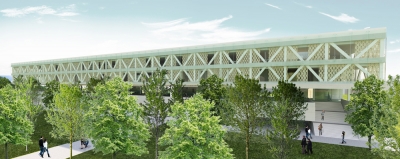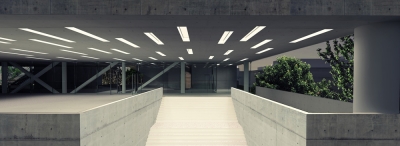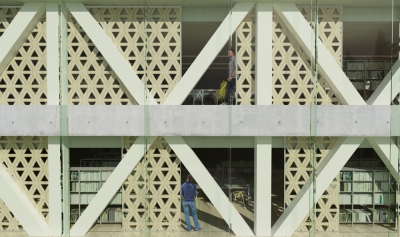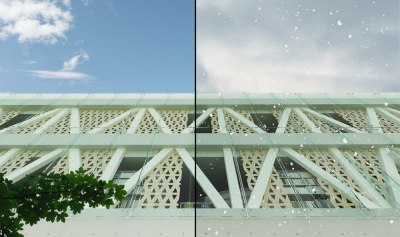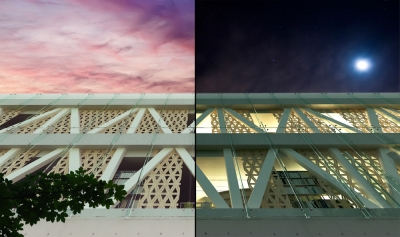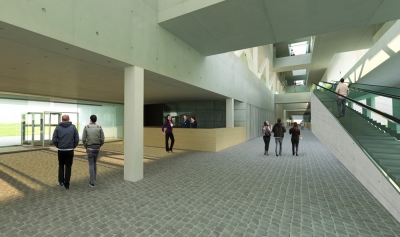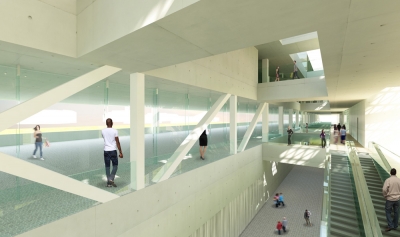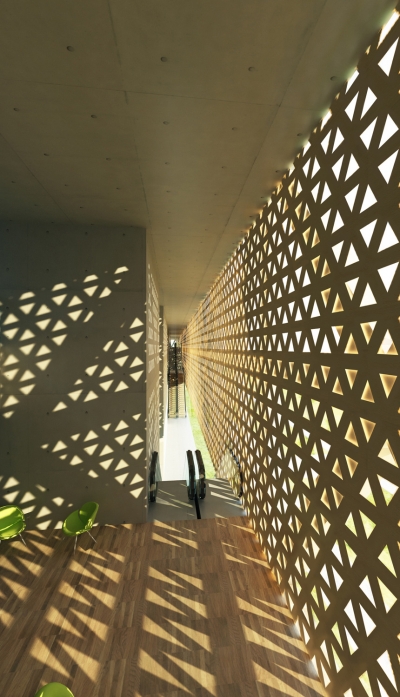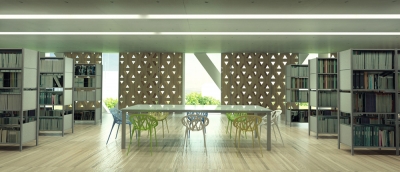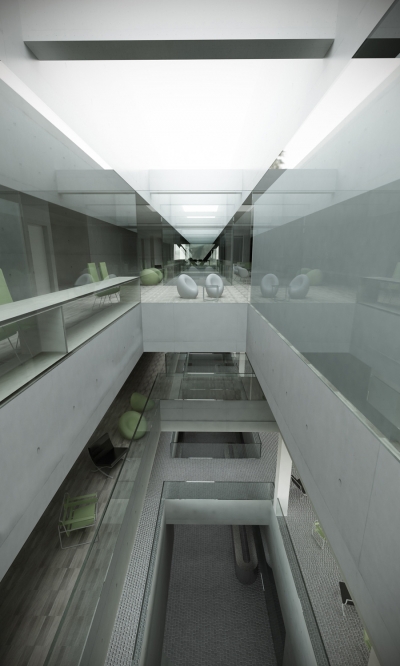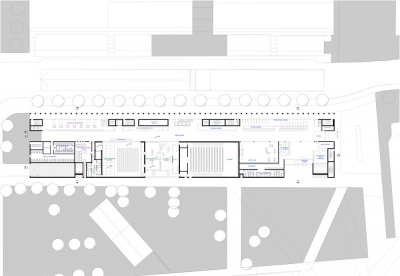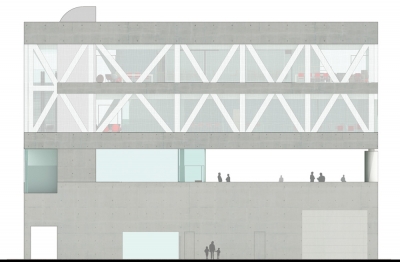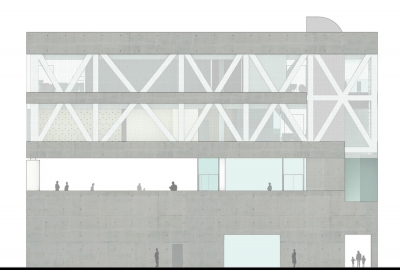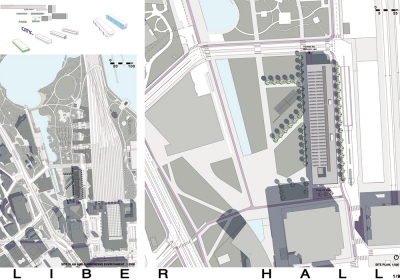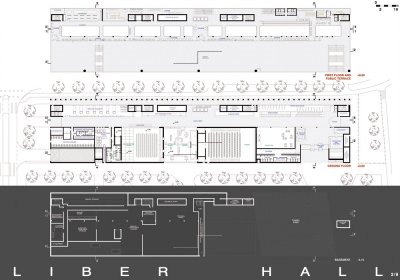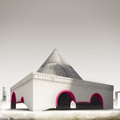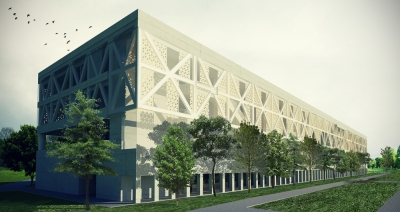
Project: The Helsinki Central Library
Designed by Ghirardelli Architetti
Location: Helsinki, Finland
Website: www.ghirardelliarchitetti.it
The Helsinki Central Library project solution created by the Italian practice of Ghirardelli Architetti.
From the Architects:
A place for everyone: open and accessible, usable and public. A public square animated by exhibitions, events and music. A space surrounded by some of the most important buildings of the city. It’s the cultural centre, heart and mind of the community.
A sheltered space, visible and easily recognizable; a place where the human knowledge makes its way to a universe of learning through the library spaces.Inside and outside, public and private, interior and exterior. In this continuous switchingfrom one state to the other, the bond with this building takes place: it introduces the mind to the deep explorations of our inner-self passing through the open gates of knowledge and sharing.
This leads us to propose a big, closed building: the entrance to the floor where the park and the street are, a sort of cave where all those things expressinghuman nature qualities are kept and that hides in itself spaces where we can fly freely, without any chains, where we can test ourselves through the different learning channels.
The entrance is little more than a hole, a crack, easily detected on a big solid wall that is apparently impenetrable. Inside, the room is amplified in a vertical projection illuminated by the depth of the sky that creates the impression of a birch forest in semi-darkness: when looking up you can see the sunrays make their way through the foliage. The cavern is full of spaces where you can startlearning: walking down the road that crosses it, you can glimpse the various parts of the city that have been left behind. The light itself makes the visitor want to find out what’s hiding overhead, between the branches of this warm and hospitable forest where getting lost is a joy. While going up, a first gash can be found: an open space where the inside and the outside merge together. People, things, sounds, the square are in and out. As you keep going upwards, you never lose contact with the city, the everyday life, the emotions and relationships that bind us to it; you’ll find the places where knowledge opens all doors to human experience and the horizon becomes accessible. And here, from these huge stilts where men find shelter from the darkness of ignorance, you can fly with no fear of burning your wings.
We’re proposing a building where stratigraphytells the plot of common feelings, the need of investigating, experimenting and understanding: all this is gathered and preserved in the libraries all over the world which people of all ages have given their contribution to, showing their own direct bond to the first trace given to build our memory.
First layer. Ground Floor. It’s a solid layer, a big, grey, concrete base that is closed, almost impenetrable. On the long wall facing the Parliament, close to the south-west corner, is the main entrance. It looks like the entrance to the cavern: short, flat, not very illuminated. When you step inside, you instantly see the long path that crosses all the building and divides it into two external passages, a northern one and a southern one. All the main lobby functions are concentrated on this axle: a path in which the light falls from the great vertical void that accompanies it and in which, at times, a sky view opens up. The light and uprightness of the space, especially emphasized by the big structural pillars that contain emergency stairs and root canal treatments of the systems, make the visitor want to go up a path that is between the Töölönlahdenkatu street outside and the path inside. This creates the impression of being in a border land.
Second layer. First floor. From the evident formal compactness of the layer below wemove to a fluid, impalpable, very bright depth. The big glass surfaces delimiting the few buildings that face on the square make the line between inside and outside rarefied. Our gaze wanders on the city and green areas around the building and detaches itself from the traffic and noise coming from the surrounding streets. It’s a big space delimited and protected by the huge stilt above: this is a remarkable feature that emphasizes the nature of the space as privileged observatory, similar to a terrace. People, sounds, colours and things meet here, at daytime and night time.
Third layer. Second and third floor. To get to this layer we keep going up, gradually detaching ourselves from our bond to everyday life but without ever losing visual contact. This part, that is “suspended between the foliage” of knowledge and is similar to a modern stilt, lets you have access to the tools that make us grow and evolve.
The material. The gap between the base and the volume of the stilts, seen as a way to create the big void on the central public square, is the inspirational reason that we followed all along our project path. Considering the ideas of solidity and roughness that the base is meant to transmit, we have chosen to use the armed concrete because it’s a material able to also carry out the structural function and that doesn’t require us to add further finish layers. It’s a bare building that shows itself and its force without mediators and represents the different emotional states that we go through as we walk inside it.
The glass is the element that makes the building complete: it delimits the transparencies and the need of open spaces that are distinctive in some internal areas and important for their functions. In the top part where book collections and all functions connected to them are kept, is a mobile system of light shielding made up of birch wood panels: it contributes to formally complete the buildingrespectingthe feelings that we had while exploring it.


